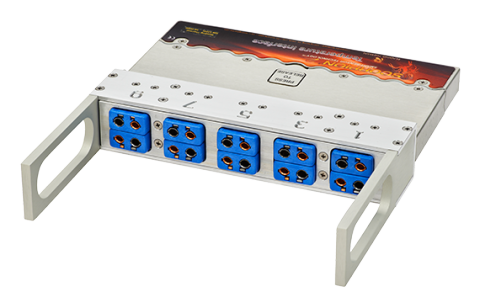If you are interested in a high temperature data logger for your commercial bakery oven, look no further than Reading Thermal and the state-of-the-art SCORPION® 2 Profiling System.
Reading Thermal, headquartered in Sinking Spring, Pennsylvania, has been focused on measuring and understanding the commercial baking process for more than 25 years.
The SCORPION® 2 Profiling System enables you to monitor actual in-process conditions and get the critical information you need to correct problems and maintain optimum process control. This powerful diagnostic tool has become an industry standard for understanding and improving your proofing, baking, cooling and freezing processes.
Importance of Oven Profiling
Oven profiling is important for product quality and consistency, for example:
- Insufficient heat during baking can cause crusts to be brittle or dry, and can create products that are too light in color and structures that are too dense.
- Excessive heat will cause moisture to evaporate too quickly, and the dough to rise unevenly. It can also cause the bottoms of loaves to burn before the crusts brown correctly.
- High oven humidity can lighten the crust color of baked goods and prevent them from burning.
- Lower humidity typically results in crustier bread.
- Lack of humidity in a cracker oven cause excess blisters to develop, which burn easily, causing undesirable dark spots.
- Excessive heat fluxes in industrial tunnel ovens can yield poor quality products in terms of color, texture, height, crust hardness, crumb moisture, and flavor.
- Air velocity influences the coloration, texture, firmness, and baking time of the final product.
Our State-of-the-Art Sensors
Temperature: Oven temperature affects oven-spring, drying and dehydration, and color formation during baking. Insufficient or excessive heat can also lead to unwelcome changes in texture and taste. The Scorpion® 2 Temperature Sensor Array is designed to measure temperature at product level, in fixed positions across the conveyor, and delivers a precise picture of temperatures from side-to-side and end-to-end.
Humidity: In a thermal process, humidity interacts with the product. The moisture in the environment often comes from the product itself and presents a delicate balance that affects finished product quality in a variety of ways (crust, texture, shelf life, etc.). The SCORPION® 2 Digital Humidity Sensor is designed to measure the moisture content of the thermal environment in both heating and cooling processes. It is applicable to proofers, ovens, dryers and cooling tunnels.
Heat Flux: The best indicator of oven performance during baking in terms of the product is heat flux. Many bakers use oven heat flux profiles when trying to produce the same product on two different lines. (The heat flux profiles must match.) The SCORPION® 2 Heat Flux Sensor is designed to measure convective and radiant heat fluxes at product level and display the results in Btu/hr·ft2 or W/m2.
Air Velocity: The airflow in convection ovens comes primarily from the air distribution plenums. In radiant ovens, the airflow comes from the moving conveyor, the exhaust system, and natural combustion air currents. Measuring the oven air velocity with the SCORPION® 2 Air Velocity Sensor will help you spot airflow differences between baking zones and unwanted air currents at the entrance or exit of the oven that result in inconsistent baking.
Prevent poor-quality baked goods by investing in a high temperature data logger from Reading Thermal. Our solutions will help you improve your products and processes. Call us at (610) 678-5890 Ext. 2 or contact us online to learn more.

